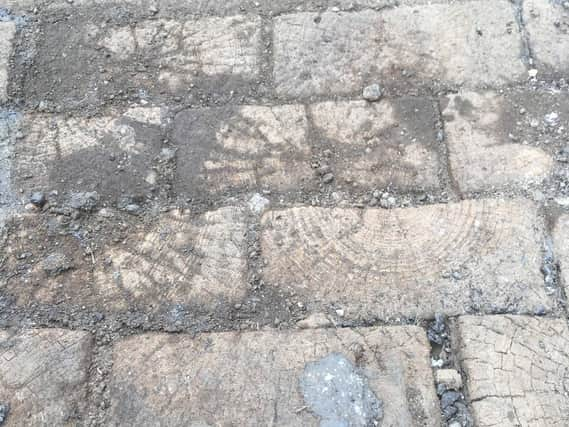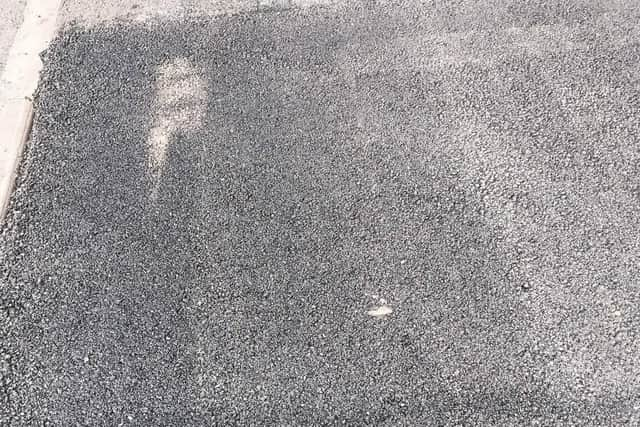Have you seen any of these wooden cobbles on streets in Sheffield?


Controversial tree felling works - part of the £2.2 billion highways improvement contract - have been on hold for more than two months now following a number of clashes between protesters and workers.
Campaigners claim trees being felled are 'perfectly healthy' and have staged protests at felling sites across the city but the council and Amey said its workers were replacing trees deemed dangerous, dead, diseased or dying, which are damaging pavements.


Advertisement
Hide AdAdvertisement
Hide AdBut contractors resurfacing roads in one part of Sheffield sparked a debate of a different kind when they unearthed these wooden cobbles - thought to date back to the 1800s.
Nigel Humberstone spotted the cobbles on Hodgson Street, near the Moore Street roundabout, while Sheffield Council contractor Amey were carrying out repairs on the road.
He said: "I've been told that the wooden cobbles were used across the city on certain roads to dampen the noise caused by the steel rims on the wooden wheels of wagons and carriages.
"The noise on the stone cobbles was very loud and these were used on areas around West Street and Division where the former Royal Hospital was - reducing the noise for patients."
Advertisement
Hide AdAdvertisement
Hide AdMr Humberstone said he'd been told the wooden cobbles would have been laid around the late 1880s and were used during the Victorian era.
He added: "I am not a native Sheffielder but I have been here since the 1980s and I am interesting in the history of the city and preserving it for future generations.
"It certainly sparked a lot of interest but the next day tarmac was laid over the cobbles."